How to Homestead
6 Ways to Go from Surviving Short-term to Thriving Long-term
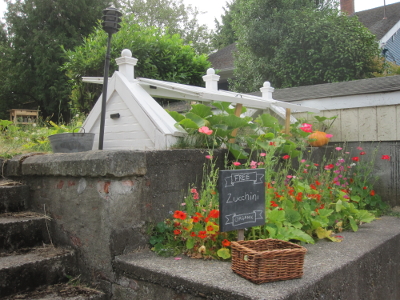
How to Homestead by Julie Stonefelt
Practicing wilderness survival knowledge will help you get through short-term emergencies and natural disasters, even in urban settings. An equally important benefit is the grounded confidence that comes from knowing you can take care of yourself and your loved ones in unexpected situations.
What if there were similar skills you could practice in your everyday life at home? What if those skills could not only benefit you, but the planet as well? If that sounds appealing then learning how to homestead might be just the thing for you.
Homesteading is a concept that originally gained popularity in the United States during the mid 1800s. Back then a variety of public policies encouraged people to head west and develop their own self-sufficient properties.
While those policies are long gone, many of the activities that homesteaders did are experiencing a resurgence. These include things like growing your own food, baking your own bread, doing your own basic home repairs, and so much more.
Learning how to homestead today is less about a geographic location and more about an approach to life. Essentially modern homesteaders use their minds, hearts, and hands to create some of what they need for their day-to-day survival.
Many homesteading skills were commonly practiced until just a couple of generations ago. As time has progressed, convenience has replaced the necessity to practice many of these skills. As a result, handing these down to the next generation stopped. And like so many things our ancestors knew, a lot has been lost.
In an ever-increasingly uncertain world, there are many reasons to bring these skills back. Today urban homesteads with vegetable gardens and backyard chickens are becoming commonplace.
The good news is that there are lots of ways to begin homesteading wherever you find yourself. In this article we will cover six ways to go from surviving short-term to thriving long-term.
6 Tips on How to Homestead:
1. Give your mindset a makeover. Just like in wilderness survival, mindset is everything in homesteading. A common misconception about homesteading is that you have to own acres of rural land. In reality, learning about how to homestead is about a state of mind or an approach to life.
Start thinking about how you can provide for your own needs by growing, building, or trading with others. As you begin to think about becoming more self-sufficient, it’s easy to get overwhelmed.
Create a notebook where you can begin planning how you will meet your goals in small steps over time, your chances of success will be greatly improved. Maintaining a good attitude will help you stick with homesteading, building confidence and security over time.
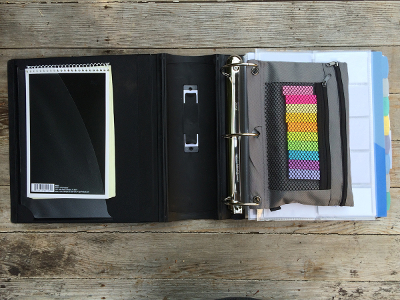 A 3-ring binder is a great place to begin planning your dreams and breaking them into smaller, actionable goals.
A 3-ring binder is a great place to begin planning your dreams and breaking them into smaller, actionable goals.
2. Use a Systems Approach to your home. Protecting yourself from the elements is a core survival priority in any situation. Whether you are living in an urban high-rise apartment or an off-grid cabin, most dwellings have a variety of systems that keep them functional. These are things like power and water.
Get to know these systems - both how they operate and where they are located - in your own shelter. This knowledge will help you feel confident handling small repairs and to communicate with tradespeople if big issues need to be addressed. Practicing DIY home skills can even be enjoyable.
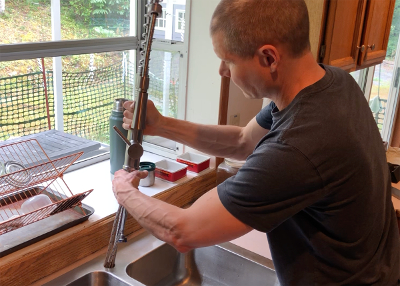 Understanding how the systems in your home work will give you the confidence to handle small repairs, such as replacing a faucet.
Understanding how the systems in your home work will give you the confidence to handle small repairs, such as replacing a faucet.
3. Make some of your own foods and drinks. Being able to find safe water and food are important keys to short-term survival. While the quantity of food might not be an issue where you live, the quality and price can often be issues.
Knowing how to make some of your own food and drinks from scratch is an essential homesteading skill. You can control the ingredients, be thoughtful about your carbon footprint, and save a ton of money. What you choose to eat has a profound impact on your health. When you eat healthy, wholesome meals, food can be considered medicine.
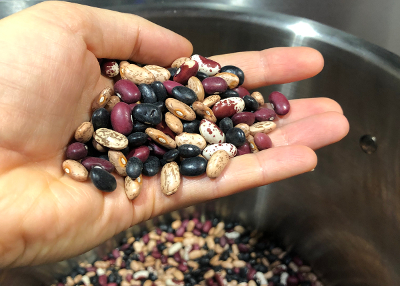 Being able to make some of your own food from scratch can be as simple as learning how to cook a pot of dried beans.
Being able to make some of your own food from scratch can be as simple as learning how to cook a pot of dried beans.Be More Prepared For Your Next Outdoor Adventure!

Don't leave without knowing these six essential survival skills. Our free survival mini guide reveals the strategies of:
- Shelter & fire to prevent the number one cause of death
- Obtaining clean water to avoid life-threatening dehydration
- Common wild survival foods and other critical skills!

4. Get crafty. Fire is a key to wilderness survival for several reasons. It not only helps you stay warm, the act of tending a fire can bring psychological support. On the homestead, learning to work with materials like wood, metal, yarn, or cloth can also bring multiple benefits.
With a little training and practice, these raw materials can be turned into spoons, knives, blankets, and clothes. In turn those products can be used directly in your daily living or sold and traded to get other things you need. Honing a craft is also a great way to pass the cold, dark winter months.
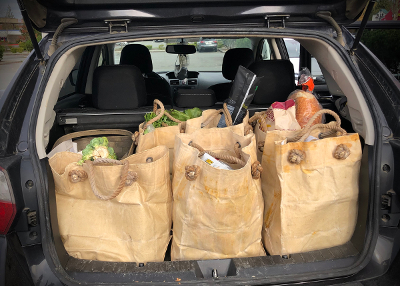 Learning how to craft items like shopping bags is handy
for trips to the grocery store. They can also be sold to generate income for other homesteading
projects.
Learning how to craft items like shopping bags is handy
for trips to the grocery store. They can also be sold to generate income for other homesteading
projects.
5. Grow something. Plants usually provide the most readily available foods in a short-term survival situation. In a long-term situation, growing your own plants can be an important skill to cultivate. Everyone can grow something.
This could be sprouts on a sunny windowsill, a container garden of herbs on a patio, a vegetable patch in a community garden or most of your food in your backyard.
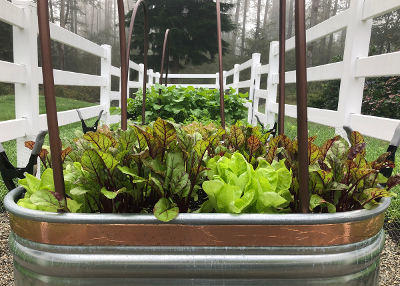 Growing some of your own food can be as simple as sprouts on a windowsill or a container garden of salad greens in the backyard.
Growing some of your own food can be as simple as sprouts on a windowsill or a container garden of salad greens in the backyard.
6. Write your own nature book. To be really great at wilderness survival you need to understand nature. The same can be said of homesteading. A nature journal is a place to keep track of seasonal changes, plants, animals, and other observations over time.
Often questions arise when you start observing nature more closely. Starting a field guide shelf and adding natural history notes to your journal will help accelerate your understanding. The rewards from developing a deeper connection to nature can be profound, including reducing stress.
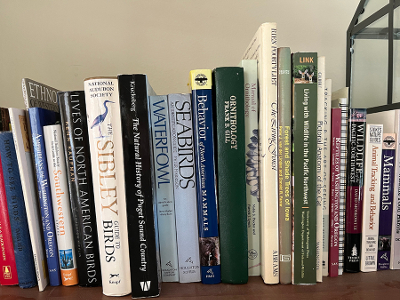 You can greatly enhance your understanding of the natural world by building a shelf of reference guides and keeping track of your observations in a journal.
You can greatly enhance your understanding of the natural world by building a shelf of reference guides and keeping track of your observations in a journal.
The six ideas presented in this article are just a starting point for learning how to homestead. You could spend a lifetime perfecting each skill. The important thing is to pick one and begin.
Just like building your skills for surviving short-term, practice is the essential ingredient for thriving long-term. Purposefully practicing these skills is enriching for you, your community, and the planet.
Additional Resources on How to Homestead:
For more information on homesteading, check out Wild Homestead Living’s article, What is Homesteading?
Interested in learning more about self sufficiency and sustainable living skills? Check out our Permaculture Courses.
By the way, a big part of why we love homesteading & permaculture skills so much is because they are a natural extension of learning about wilderness survival (both fields are all about self-sufficiency and working with nature to satisfy needs). An understanding of survival not only helps you become a better permaculturist, it empowers you with life-saving outdoor skills to keep you safe when out in nature. Right now you can get a free copy of our mini survival guide here, where you'll discover six key strategies for outdoor emergencies, plus often-overlooked survival tips.

About the Author: Julie Stonefelt is a cancer survivor, park ranger, and co-founder of Wild Homestead Living. She is a periodic guest teacher at Alderleaf. Learn more about Julie Stonefelt.
Return from How to Homestead back to Permaculture Articles
Is The Essential Wilderness Survival Skills Course Right for You? Take the "Online Survival Training Readiness" Quiz
See for yourself if this eye-opening course is a good fit for you. It takes just a few minutes! Get your Survival Training Readiness Score Now!

Grow Your Outdoor Skills! Get monthly updates on new wilderness skills, upcoming courses, and special opportunities. Join the free Alderleaf eNews and as a welcome gift you'll get a copy of our Mini Survival Guide.

 The Six Keys to Survival: Get a free copy of our survival mini-guide and monthly tips!
The Six Keys to Survival: Get a free copy of our survival mini-guide and monthly tips!
Learn more